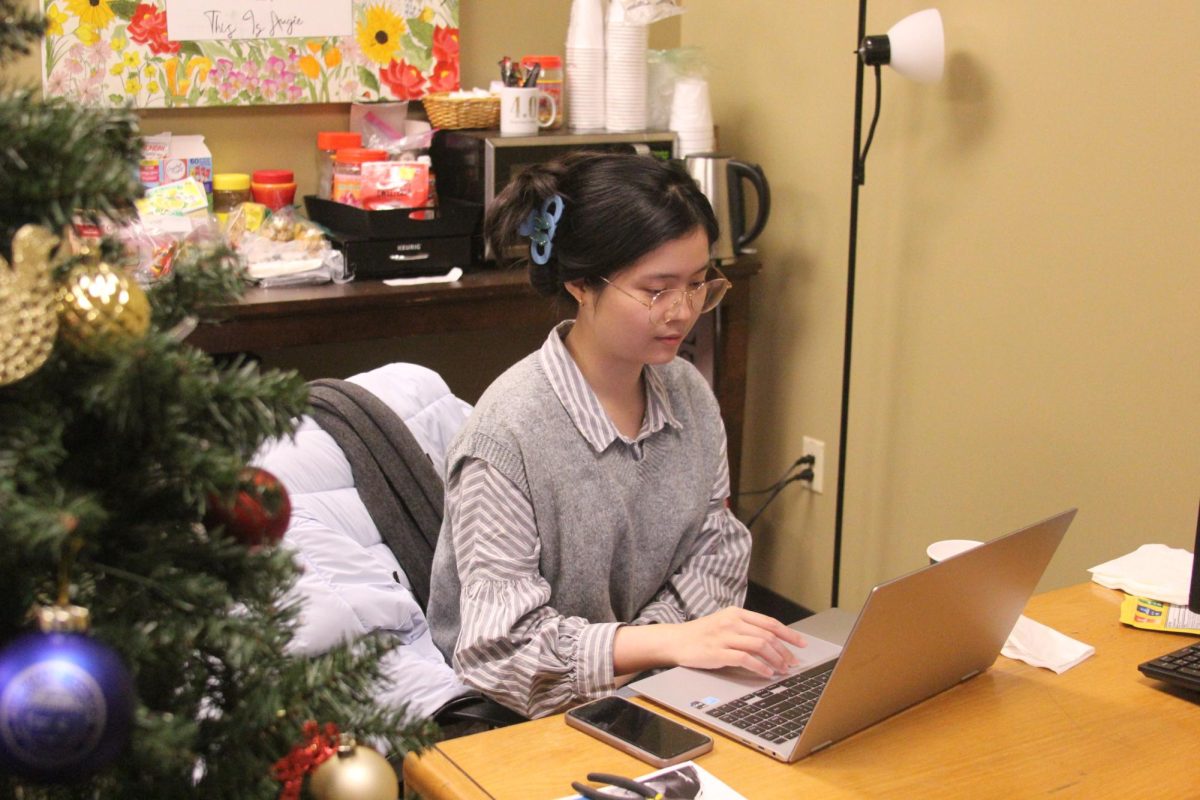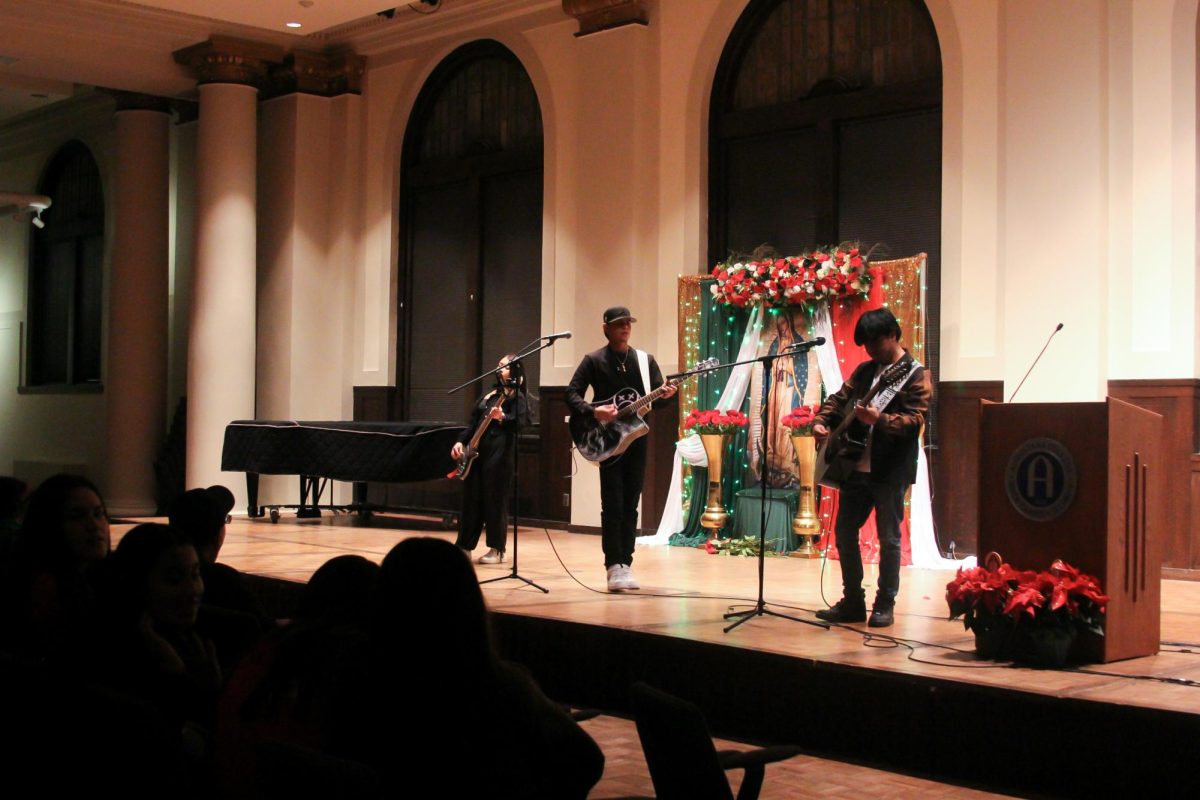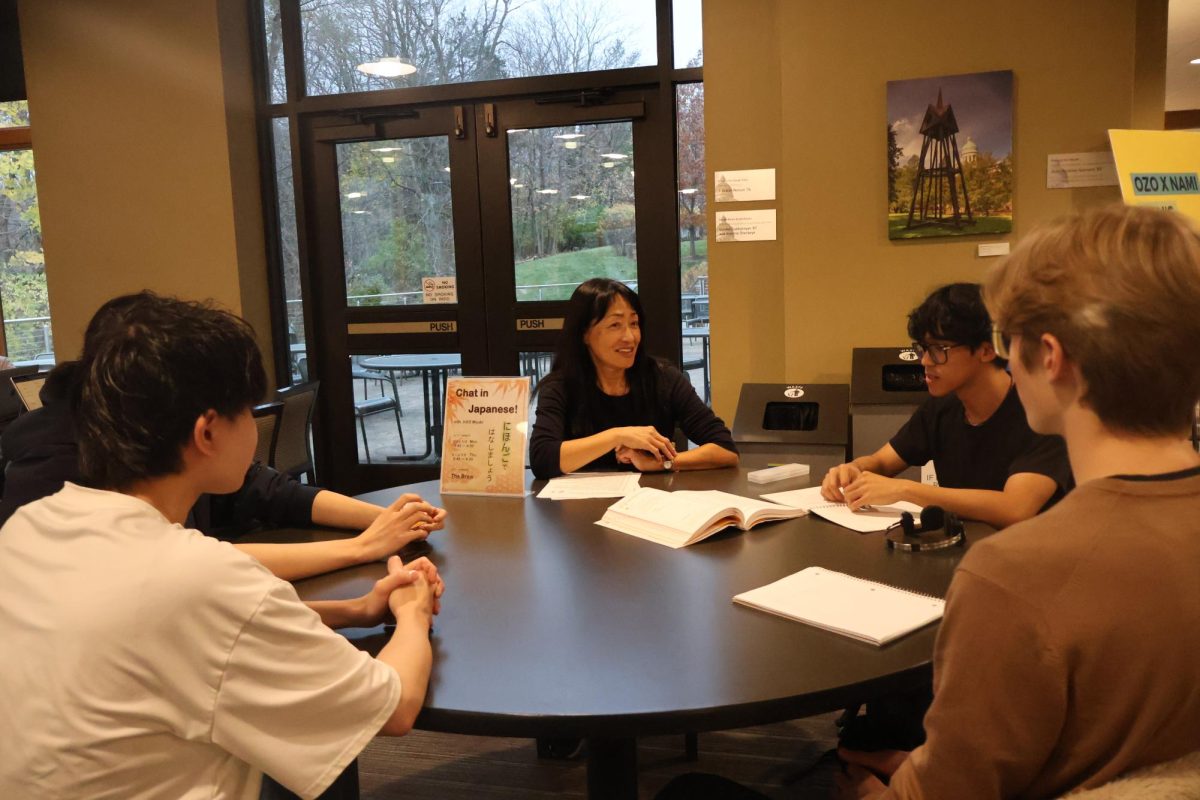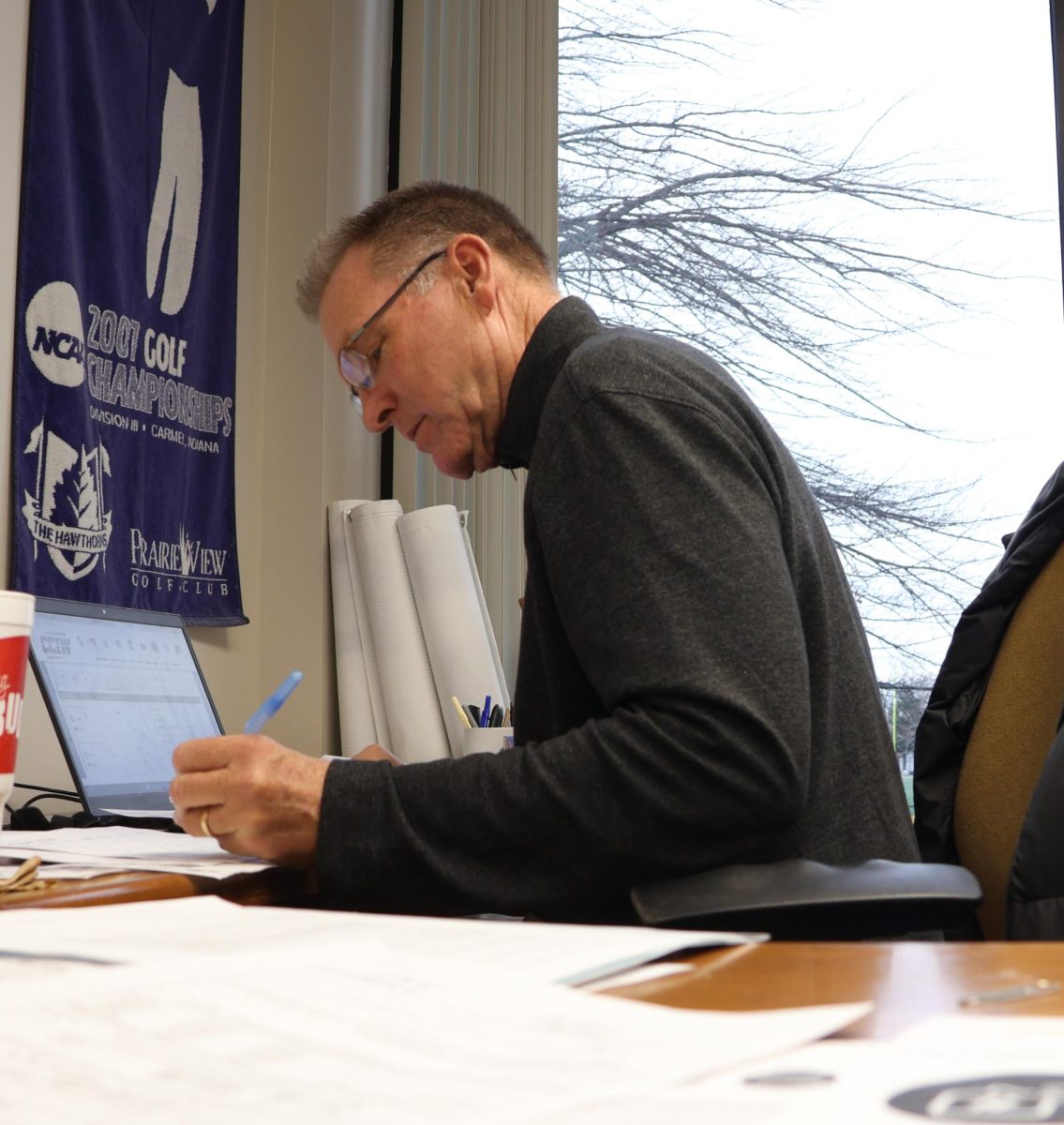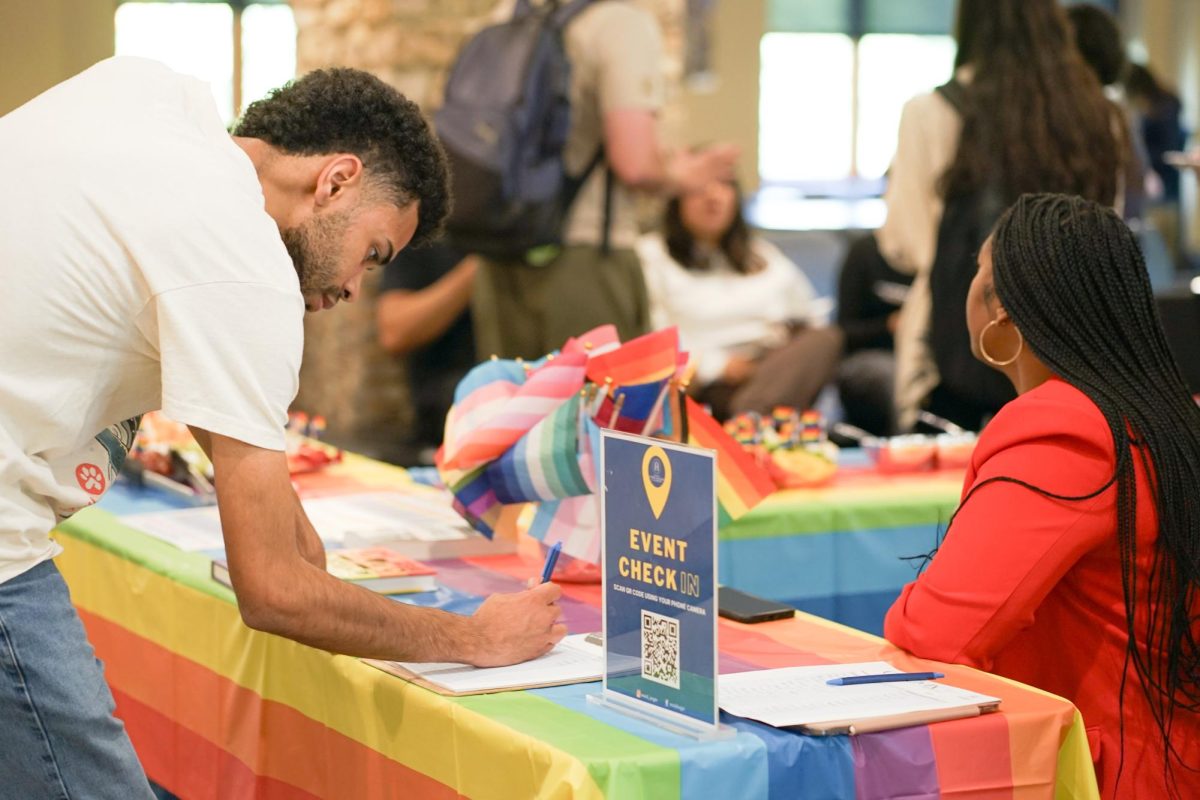Campus communities are often united through one universal love: food. Food to a college student is freedom from the stress of classes – a break from the ever-running busyness that ensnares students’ consciousness during the school week.
However, as the Augustana community has discovered with their new semester scheduling, lunch time may be more strenuous than ever before.
“On trimesters, I was able to take my time and enjoy my food,” Mel Parker, sophomore, said. “But now with the new scheduling, I think about going to the CSL, but when I see the swarm of students heading in, I turn around and decide to eat somewhere else. I only have an hour to eat before my next class – I can’t afford to waste all the time waiting in line for lunch.”
With the new term schedules around 11:10 a.m. to 12:10 p.m. on Mondays, Wednesdays and Fridays, the Gerber Center Dining Hall experiences an influx in students. At these times, the amount of students in the hall increases to such large sums that long lines are inevitable.
“It is quite uncomfortable seeing lines all the way down to the Brew and then in front of each service station,” Fred Kurt, head director of dining, said. “The largest frustration is that the students, as our customers, shouldn’t experience stress when getting food. We don’t want you to be inconvenienced with long lines and waiting for food. We want you to have a good experience every day.”
Not only is the great sum of students overwhelming, the choices for food are also a concern. With so many people heading in at once, how can employees keep up with the amount of mouths to feed? Are food supplies stocked well enough for this rush?
“We forecast the same number of customers, so the food supply amounts will be fine as we just need to adjust to making larger volumes of food quicker or in advance,” Kurt said. “The first week was very challenging because we weren’t sure what the customer counts were going to be, but as time goes on, we find that making the count more accurate allows us to be more prepared for the number of students that arrive around the rush times from 11:15 to 11:45.”
Students not only see this rush in the Dining Hall, but also the Snack Bar. Lines often back up around the stairwell up to Brunner Theater, often causing a slight panic at. With the line being so long, the workers there have encouraged all students to acquire a meal plan/meal swipe to make things go smoother. For students that don’t or can’t, they are still greeted with smiles and kindness from the workers – it just creates a more rugged running system.
Not only is the fight for food causing the students to rethink meal times, but rearrangement of schedules all together.
“Our meeting break time, as we called it, ended up being lunch for many, many folks,” Dr. Randy Hengst, chair of the faculty council and education professor, said.
Hengst knows of the lunch “fiasco” and is contemplating various ways of fixing the schedule for next year. The faculty are currently working towards building their course offerings for next year.
These course schedules will be a good outlet for changing the daily schedule. Hengst is seeking opinions on what way would best solve the schedule. Ideas include starting classes earlier or having faculty meetings later in the day.
“As someone with a very busy schedule that has lunch in the [Snack Bar] every day, the lunch rush really impacts me,” Halley Price, sophomore, said as she waited in the line at Gus’ Snack Bar. “Sometimes I have to go to classes without eating because the line is too long and I won’t be able to get food in time.”
Students have rearranged their lunch attendance times as well, allowing the lunch rush to dwindle down as they become more strategic about retrieving their food.
“Students make adjustments to avoid the rush when possible and it settled out after a few weeks,” Kurt said. “We now have a general idea of the lunch time attendance and are able to prepare food in advance to make sure everyone is able to have a meal.”
Dr. Jayne Rose, professor of psychology, helped campus transition into a semester college. Rose didn’t create the master daily schedule herself, but she did vote on it back in November of 2017 with the rest of the faculty.
“The curriculum changed completely, the billing office changed completely, there have been changes within the dining services and residential life. When you think about all of the moving parts to the campus, pretty much all of them got altered in some way,” Rose said. “There are obviously some things that need to be tweaked or reconsidered.”
Rose says the daily schedule needs discussion and it involves asking questions about whether or not 10 minutes between classes is enough for students to traverse campus. Rose is aware of students making statements regarding the lunch schedule.
“I think when you first contacted me you said the lunch hour. I thought, ‘Yeah that is the way it has been interpreted. It wasn’t the way it was originally envisioned,” Rose said. “Nothing will be changed for this year. It is just really difficult to go in and change all of the systems that are necessary for registering people, etc. I think it is still on burner for considering changes in the next year.”
According to Rose, there was a lot that went into the daily schedule. Some ideas were proposed by faculty, like starting after 8:30 a.m. and adding the Wednesday before Thanksgiving off. Yet, there were stipulations that were out of the college’s control like credit hours and the number of minutes students needed to be in class per term.
“This was the best draft that we were able to come up with,” Rose said. “That doesn’t mean that it is the best draft for the long haul.”
The problem with forcing students to make adjustments to their schedules may very well be like Price, having to avoid the lunch rush all together. Five students were asked about their feelings on this lunch rush and most of the responses were similar in dissatisfaction.
“All this lunch break time did was make it harder to grab something between classes,” Price said. “It also puts unneeded stress on the dining services staff, because they scramble to keep up with the rush and often the computers are down, creating more stress for both the students waiting for food and the servers helping us out.”
“I’m guessing it’s from a good place,” sophomore Elizabeth Merill said, waiting in line at the Dining Hall.
“They probably wanted to make sure that students who have classes back to back have a break and can actually eat. However, I’m not a huge fan. It’s a mess and everyone feels like they need to be in a rush in order to make it to class on time. It takes forever to get through the lines. It’s stressful for everyone eating at that time, but it also seems to be stressful for the workers since they have a difficult time keeping up,” Merill said.
While students keep up with the lunch rush, their time narrows as they wait in line for their food. Back to back classes, heaps of homework and lunch struggles don’t bode well with students. Lunch time is a relief to students, a minor break in the busy school day. However with the new schedule, they are finding that even lunch does not bring them the relaxation they would regularly receive.
“The lunch rush revolves around the academic class schedule which is currently being evaluated for change within academics,” Kurt said. “However, I am not sure it will be accomplished yet this year. They are aware of the lunch time challenges.”
Categories:
Dine & Dash: Semester schedule shortens mealtime
October 24, 2019
0
More to Discover

